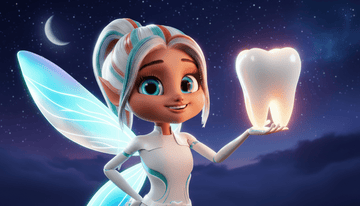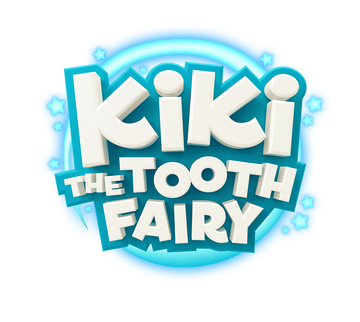At some point, every parent faces this question:
“How old is the Tooth Fairy?”
For kids, it’s not just small talk. They want to know who’s sneaking under their pillow at night, and how long she’s been around. Is she thousands of years old? Is she older than Santa Claus? Or is she brand new?
The truth is more fascinating than most parents expect. The Tooth Fairy is timeless in the magical sense, but as a cultural tradition, she’s actually quite young. In this guide, we’ll explain both sides: the fairy-tale age kids imagine and the historical age scholars can trace, and give you fun, kid-friendly answers you can use when the question comes up.
The Magical Age of the Tooth Fairy
When children ask about the Tooth Fairy’s age, they’re usually expecting a magical answer. This is your chance to lean into the wonder.
Here are some fun responses parents use:
-
“She’s as old as magic itself.” Timeless, unmeasurable, and eternal.
-
“Younger than Santa, older than dinosaurs.” A playful way to avoid giving a concrete answer, while keeping things fun.
-
“She’s thousands of years old, but unlike humans fairies never age!” A wink at her magical powers and timelessness…
-
“Every time a child loses a tooth, the Tooth Fairy gets a tiny bit younger.” A silly, surreal twist kids love.
Because fairies live outside human time, you can frame her age as endless and ever-changing. For young children, the Fairy being “ancient but forever young” keeps the story intact.
The Historical Age of the Tooth Fairy
Now for the real answer: the Tooth Fairy as we know her today is only about 100 years old.
-
Ancient Roots: Tooth traditions date back over 1,000 years. In Viking culture, children received a tand-fe (tooth fee) when they lost a tooth. Parents paid them small coins, just like today
-
Medieval Europe: Parents buried or burned baby teeth to protect kids from witches. This shows the long-standing belief that baby teeth had power.
-
Tooth Mouse: In France, La Petite Souris (the Little Mouse) was sneaking under pillows in the 1700s. Spain’s El Ratoncito Pérez gained fame in the late 1800s.
-
The Tooth Fairy: The first known mention of a Tooth Fairy appears in a 1927 children’s play. By the 1940s, American parenting advice columns encouraged parents to use the Fairy to make tooth loss less scary. By the 1950s, with Disney fairies like Tinker Bell soaring in popularity, the Tooth Fairy was mainstream.
So if you’re answering historically, the Tooth Fairy is around 100 years old, much younger than Santa Claus (centuries old) or the Easter Bunny (17th century).
How the Tooth Fairy Stays Forever Young
Even if she first appeared in the 1920s, the Tooth Fairy hasn’t aged a bit in children’s imaginations. Every generation refreshes her:
-
In the 1950s she appeared in storybooks and cartoons.
-
In the 1980s she showed up in films and TV specials.
-
Today she even stars in digital letters and personalized videos, making her feel alive for modern kids.
The secret to her “agelessness” is that she’s always changing while keeping the magic the same.
Fun Ways to Answer Kids
So what should you actually say when your child asks, “How old is the Tooth Fairy?”
Here are a few approaches:
-
For Younger Kids (5–7):
“She’s thousands of years old, but her magic keeps her forever young!” -
For Older Kids (8–10):
“The tradition has been around for about 100 years, but she’s as old as childhood itself.” -
For Tweens (10+):
“The Tooth Fairy started about 100 years ago, but now she’s part of our family tradition. You get to help keep her alive.”
This lets you adapt the story to your child’s stage of curiosity.
The Modern Tooth Fairy: Ageless Magic
If the Fairy is about 100 years old, why does she feel timeless? Because she evolves with every generation.
-
Letters: Parents started writing little notes to go with coins. Today, you can make them instantly with the Kiki Tooth Fairy Letter Generator, which includes silly adventures and keepsake pictures of the Fairy herself.
-
Videos: Kids don’t just imagine her anymore — they can see her. With Kiki’s personalized videos, the Tooth Fairy calls children by name and congratulates them directly.
-
Payouts: In 1950, the Fairy left nickels or dimes. Today, the average is over $6 per tooth in the U.S. (Dental Care Alliance). Inflation has hit the Fairy too!
-
Keepsakes: Tooth Fairy pillows, boxes, and now digital mementos keep the tradition fresh.
The result? The Tooth Fairy may only be a century old historically, but she feels eternal because she’s always changing with families.
FAQs: How Old Is the Tooth Fairy?
Is the Tooth Fairy older than Santa?
No. Santa’s roots go back to Saint Nicholas (3rd century). The Tooth Fairy is about 100 years old.
When did the Tooth Fairy first appear?
1927 in America, and she became popular in the 1940s–50s.
Is the Tooth Fairy real?
For kids, yes — as long as they believe. For adults, she’s a cultural tradition that keeps childhood magical.
Do all countries believe in the Tooth Fairy?
No. France and Spain have a Tooth Mouse. In Japan, children throw teeth onto rooftops. In the Middle East, teeth are buried.
What should I tell my child about her age?
You can give both answers: “She’s thousands of years old magically, but about 100 years old as a tradition.”
Final Thought
So how old is the Tooth Fairy?
-
Magical answer: She’s as old as magic itself — timeless, ageless, forever young.
-
Historical answer: She’s about 100 years old, first appearing in America in the 1920s.
Either way, she remains one of the most beloved traditions in the English-speaking world. And with personalized letters and videos from Kiki the Tooth Fairy, the magic keeps evolving!
If you're looking for more fun ways to keep the tradition going, check out our 'Tooth Fairy Ideas Guide'.






